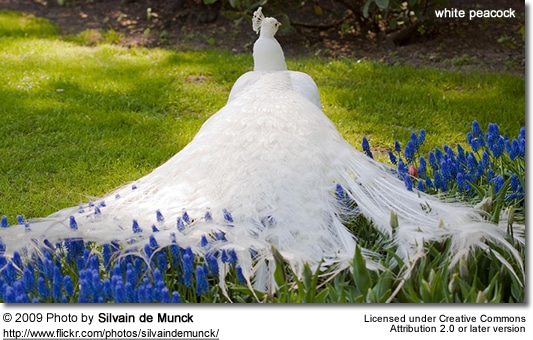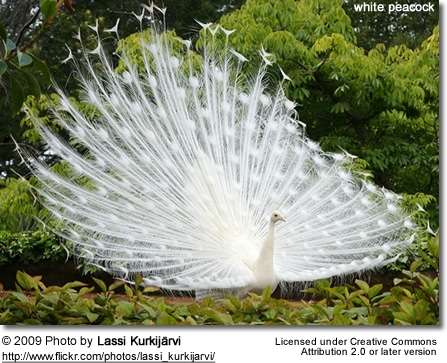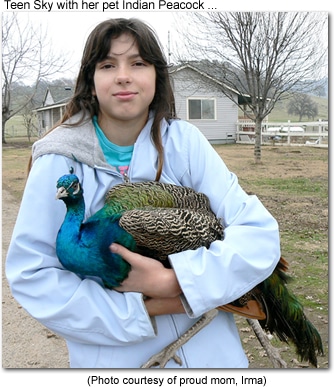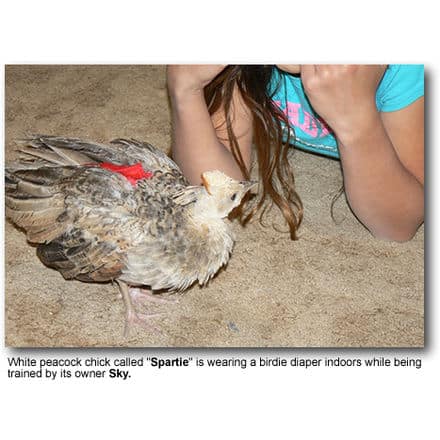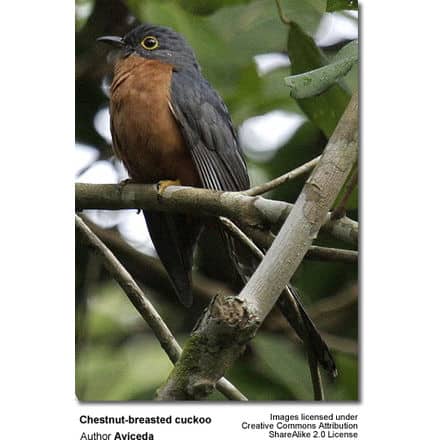Indian Peafowl aka Common Peafowl or India Blue Peafowl
The Indian Peafowl (Pavo cristatus) – also known as the Common Peafowl and the India Blue Peafowl – is native to India and Sri Lanka inhabiting dry semi-desert grasslands, scrub and deciduous forests.
Pheasant General Information … Pheasant Species / Pheasant Taxonomy … Breeding Pheasants … Pheasant Photo Gallery … Housing Pheasants … Pheasant Diseases
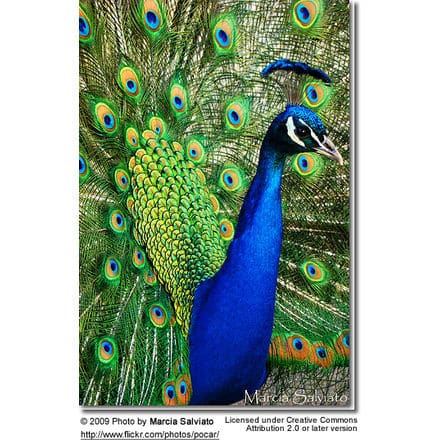
Indian Peafowl went feral in Mexico in the 19th century. The range of these peafowl now reaches across most of Mexico, and much of the USA from California to Florida.
The male is commonly referred to as a peacock and the female as a peahen.
The peacock is the national bird of India.
Peacocks are sometimes kept as domesticated animals for decoration.
Description:
The Indian Peacock has beautiful iridescent blue-green plumage. The upper tail coverts are enormously elongated and ornate with an eye at the end of each feather.
The female plumage is a mixture of dull green, grey and iridescent blue, with the greenish-grey predominating. In the breeding season, females can be told apart from the lack of the long tail feathers also known as the train.
Hens can be distinguished from males in the non-breeding season by the green color of the neck as opposed to the blue on the males.
Peafowl are most notable for the male’s extravagant tail also known as a train, a result of sexual selection, which it displays as part of courtship. This train is in reality not the tail but the enormously elongated upper tail coverts. The tail itself is brown and short as in the peahen.
Peacocks can live up to 20 years in their natural habitats.
Many varieties exist, such as black-shouldered, oaten, white, purple, opal, pied, and midnight.
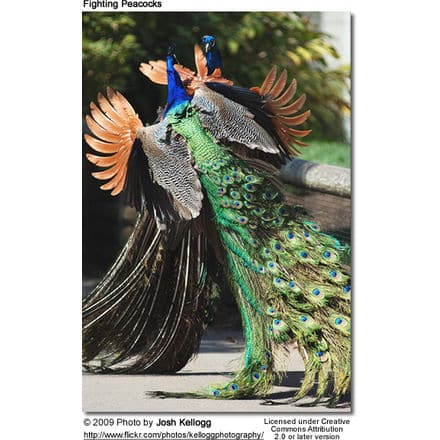


Breeding:
Hens lay a clutch of 4-8 eggs which will hatch after about 28 days of incubation. The eggs are light brown and are laid every other day – usually in the afternoon. The male does not assist with the rearing, and can service up to six hens.
This species can hybridise with the closely related Green Peafowl, Pavo muticus, and create offspring called spaldings (this is especially named for the hybrid of the “black-shoulder” variation of the indian peafowl and the java green subspecies of the green peacock).
A striking white mutation has occurred in captivity (please refer to below photos) – although it has been speculated that a few white peafowl bred naturally in India. White was one of the first variations to be discovered and made popular, and has been around for many years.
Contrary to popular belief, whites are not albinos, because their eyes are blue, not pink. Males are, as their name implies, completely white. Faint eyespots can be distinguished in the train by a thin layer of off white that surrounds the ocelli. The actual seeing eyes of the birds are blue.
Hens are completely white, with blue eyes.
Recently hatched chicks are yellow in color with white wings. White chicks are hard to sex until about two years of age when the male will developed wispy tail coverts, because the bird does not change color much in its lifetime, and the male and female look so similar.
Chicks born at the same time can sometimes be sexed by the length of their legs. Males often have longer legs than the females.
White peafowl bred to white will produce 100% white offspring. White is an incomplete dominant gene, so when a white is bred to a non-white the offspring will be split to white, and this will show itself by small white patches on its primary wing feathers.
Diet:
These pheasants forage and nest on the ground but roost on top of trees. They mainly eat seeds, but also some insects, fruits, reptiles and even snakes.

